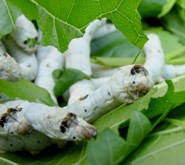
The EPSRC-funded study, published in Biomacromolecules and undertaken by University of Bristol researchers, explored the feasibility of using natural fibres such as silk and cellulose as stem cell scaffolds - the matrix to which stem cells can cling to as they grow.
Both cellulose and silk are commonly used in textiles but the researchers demonstrated an unexpected use for the two natural polymers when mixed with stem cells. The team treated blends of silk and cellulose for use as a tiny scaffold that allows adult connective tissue stem cells to form into preliminary form of chondrocytes - the cells that make healthy tissue cartilage - and secrete extracellular matrix similar to natural cartilage.
Dr Wael Kafienah, lead author from the University's School of Cellular and Molecular Medicine, said: "We were surprised with this finding, the blend seems to provide complex chemical and mechanical cues that induce stem cell differentiation into preliminary form of chondrocytes without need for biochemical induction using expensive soluble differentiation factors. This new blend can cut the cost for health providers and makes progress towards effective cell-based therapy for cartilage repair a step closer."
Dr Sameer Rahatekar, lead author from the University's Advanced Composite Centre for Innovation and Science (ACCIS), added: "We used ionic liquids for the first time to produce cellulose and silk scaffolds for stem cells differentiation. These liquids are effective in dissolving biopolymers and are environmentally benign compared to traditional solvents used for processing of cellulose and silk."
The teams are currently working on the fabrication of 3D structures from the blend suitable for implantation in patient joints with future studies focusing on understanding the peculiar interactions between the blend and stem cells towards refining the quality of regenerated cartilage.
Paper
The EPSRC-funded study, entitled 'Directing Chondrogenesis of Stem Cells with Specific Blends of Cellulose and Silk' by Nandita Singh †, Sameer S. Rahatekar *‡, Krzysztof K. K. Koziol §, TH. Sky Ng †, Avinash J. Patil , Stephen Mann , Anthony P. Hollander †, and Wael Kafienah *† is published in Biomacromolecules.
Source: Bristol University